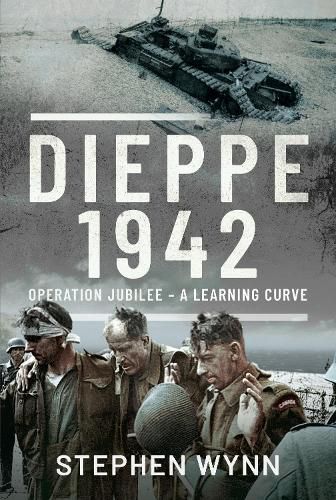Readings Newsletter
Become a Readings Member to make your shopping experience even easier.
Sign in or sign up for free!
You’re not far away from qualifying for FREE standard shipping within Australia
You’ve qualified for FREE standard shipping within Australia
The cart is loading…






On 19 August 1942, an Allied amphibious raid took place on the coastal town of Dieppe in northern France, when a force of some 6,500 infantry soldiers, predominantly Canadian, and supported by a number of tanks were landed by ships of the Royal Navy under a blanket of cover provided by the RAF. The official reason for the raid was to capture the town's port, gather relevant intelligence, and destroy a number of coastal defences, port structures and other identified buildings. Allied authorities believed the raid would not only provide a much-needed boost to Allied morale, but also demonstrate to Stalin that Britain and the United States were serious in their commitment to opening a second front, in order to help the Soviet army fighting on the Eastern Front. It has also been suggested that the real reason for the raid was to capture a new German 4-rotor Enigma code machine, along with related code books. Whatever the reasons for the raid, it was an unmitigated failure. The German defences were more formidable than intelligence reports suggested they would be, Allied aerial and naval support was insufficient, meaning soldiers were unable to achieve their objectives, and most of the tanks failed to make it off the beaches. Indeed, due to the unexpected mounting casualties, the decision was taken to cut short the raid and evacuate the remaining men. AUTHOR: Stephen is a retired police officer having served with Essex Police as a constable for thirty years between 1983 and 2013. He is married to Tanya and has two sons, Luke and Ross, and a daughter, Aimee. Both Stephen's grandfathers served in and survived the First World War, one with the Royal Irish Rifles, the other in the Mercantile Marine, whilst his father was a member of the Royal Army Ordnance Corps during the Second World War. When not writing Stephen can be found walking his dogs with his wife, Tanya, at some unearthly time of the morning when most normal people are still fast asleep. 32 b/w illustrations
$9.00 standard shipping within Australia
FREE standard shipping within Australia for orders over $100.00
Express & International shipping calculated at checkout
On 19 August 1942, an Allied amphibious raid took place on the coastal town of Dieppe in northern France, when a force of some 6,500 infantry soldiers, predominantly Canadian, and supported by a number of tanks were landed by ships of the Royal Navy under a blanket of cover provided by the RAF. The official reason for the raid was to capture the town's port, gather relevant intelligence, and destroy a number of coastal defences, port structures and other identified buildings. Allied authorities believed the raid would not only provide a much-needed boost to Allied morale, but also demonstrate to Stalin that Britain and the United States were serious in their commitment to opening a second front, in order to help the Soviet army fighting on the Eastern Front. It has also been suggested that the real reason for the raid was to capture a new German 4-rotor Enigma code machine, along with related code books. Whatever the reasons for the raid, it was an unmitigated failure. The German defences were more formidable than intelligence reports suggested they would be, Allied aerial and naval support was insufficient, meaning soldiers were unable to achieve their objectives, and most of the tanks failed to make it off the beaches. Indeed, due to the unexpected mounting casualties, the decision was taken to cut short the raid and evacuate the remaining men. AUTHOR: Stephen is a retired police officer having served with Essex Police as a constable for thirty years between 1983 and 2013. He is married to Tanya and has two sons, Luke and Ross, and a daughter, Aimee. Both Stephen's grandfathers served in and survived the First World War, one with the Royal Irish Rifles, the other in the Mercantile Marine, whilst his father was a member of the Royal Army Ordnance Corps during the Second World War. When not writing Stephen can be found walking his dogs with his wife, Tanya, at some unearthly time of the morning when most normal people are still fast asleep. 32 b/w illustrations